Key Takeaways
1. Lean Inception: Aligning Teams for the Right Product
Lean Inception is useful when the team needs to iteratively develop an MVP.
Shared Understanding. Lean Inception addresses the critical need for teams to start agile projects with a shared understanding and an effective plan. It bridges the gap between the initial idea and the actual development, ensuring everyone is on the same page regarding the product's purpose and direction. This alignment is crucial for minimizing wasted effort and maximizing the chances of building a product that truly meets user needs.
Iterative Development. The core of Lean Inception lies in its focus on iterative development of a Minimum Viable Product (MVP). This approach allows teams to learn and adapt quickly based on user feedback, ensuring that the product evolves in the right direction. It's about building something small, testing its assumptions, and then iterating based on the results.
Addressing Key Questions. Lean Inception directly answers key questions that often plague the beginning of agile projects:
- What should be in the MVP?
- How do we start an agile project as quickly as possible?
- How do we ensure the team starts with a shared understanding?
- How do we create an effective plan?
2. MVP: Validating Assumptions, Minimizing Waste
Minimum Viable Product (MVP) is the simplest version of a product that can be made available to validate a small set of assumptions on the business.
Hypothesis Validation. The MVP is not just a smaller version of the final product; it's a tool for validating key business assumptions. It's about identifying the riskiest assumptions and then building the simplest possible product to test those assumptions in the real world. This approach minimizes the risk of building something that nobody wants.
Evolutionary Creation. MVP promotes an evolutionary creation process, where the product is built incrementally based on validated hypotheses. This requires an architecture and building tools that allow for continuous and progressive evolution. Each iteration adds new value to the product, guided by user feedback and data.
Lean Startup Principles. The concept of MVP is deeply rooted in the Lean Startup movement, emphasizing fast cycles of experimentation and learning. It's about getting a product into the hands of users as quickly as possible to gather feedback and iterate. This approach allows for course correction early in the development process, reducing the risk of building the wrong product.
3. The Lean Inception Workshop: A Collaborative Recipe
During the Inception workshop, dynamic activities take place to define goals, strategies and scope of the product, as well as mapping and prioritizing the desirable features to be incrementally delivered, building the MVPs.
Structured Collaboration. The Lean Inception workshop is a structured, collaborative process designed to guide participants in understanding and planning for the incremental delivery of MVPs. It's a recipe with sequenced activities that enable the team to discover and understand collectively the scope of what is going to be developed.
Key Activities: The workshop involves a series of dynamic activities, including:
- Describing the product vision
- Prioritizing business goals
- Describing the main users and their needs
- Understanding the main functionalities
- Detailing perceptions of risk, effort, and business value
- Creating an incremental product enhancement plan
Team Jelling. The workshop's main goal is to make the team discover and understand collectively the scope of what is going to be developed. In the end, the team should be jelled and with a clearer view of the path to follow. This shared understanding and alignment are crucial for the success of the project.
4. Product Vision: Defining the North Star
Somewhere between the idea and the launching, the vision of the product helps to trace the initial path.
Guiding Principle. The product vision serves as a guiding principle, helping to trace the initial path from idea to launch. It defines the essence of the business value and must reflect a clear and convincing message to clients. It's the "why" behind the product.
Collaborative Creation. Writing the product vision is a collaborative activity, involving the entire team. This ensures that everyone understands the overall goal and is aligned on the direction of the product. The book provides a template for crafting a compelling product vision statement.
Template for Product Vision:
- For [final client],
- whose [problem that needs to be solved],
- the [name of the product]
- is a [product category]
- that [key-benefits, reason to buy it].
- Different from [competition or current alternative],
- our product [key-difference].
5. Personas and Journeys: Understanding the User
To effectively identify the functionalities of a product it is important to have in mind users and their goals.
User-Centric Approach. Understanding the users and their goals is paramount to identifying the right functionalities for the product. Personas and user journeys are essential tools for achieving this understanding. They help the team to empathize with the users and design a product that truly meets their needs.
Personas: Personas represent the different types of users who will interact with the product. They are not just roles but realistic representations of users, with specific needs and behaviors. The book provides a template for creating personas, focusing on their profile, behavior, and needs.
User Journeys: User journeys describe the sequence of steps a user follows to reach a goal. They illustrate how the user interacts with the product and highlight potential pain points and opportunities for improvement. By mapping out these journeys, the team can identify the features that are most important to the user.
6. Features: Discovering Value
Feature is the description of an action or interaction of a user with the product.
Actionable Descriptions. Features are descriptions of actions or interactions a user has with the product. They should be simple and focused on what the user is trying to accomplish. The book emphasizes the importance of discovering features based on the needs of the personas and the goals of the product.
Prioritization. The book provides a structured approach to discovering features, starting with the most important personas and goals. This ensures that the features with the highest priority are identified first. The process involves brainstorming and discussing which features are necessary to help the personas reach their goals.
Technical, UX, and Business Review: Each feature should undergo a review process to assess its technical feasibility, user experience value, and business value. This helps the team to make informed decisions about which features to include in the MVP and subsequent iterations. The book provides a framework for ranking features based on these criteria.
7. Sequencing Features: Planning Incremental Delivery
Which one of these two is the priority?
Prioritization is Key. Sequencing features is about prioritizing them in a way that allows for incremental delivery and validation. It's not just about identifying the most important features but also about determining the order in which they should be built and released. The book introduces the concept of the Feature Sequencer, a tool for visualizing and planning the sequence of feature delivery.
Feature Sequencer Rules: The Feature Sequencer is guided by a set of rules designed to ensure a balanced and iterative approach to development:
- A wave can contain a maximum of 3 features.
- A wave cannot contain more than one feature with a red card (high uncertainty).
- Each wave must have at least one green feature (low uncertainty).
- The effort score of the features cannot add up to more than 5 Es per wave.
- The business value score of the features must sum to at least 4 $s per wave.
- The User eXperience value score of the features must sum to at least 4 hearts per wave.
Identifying MVPs: The Feature Sequencer helps to identify the increments and evolutionary creation of the product. By arranging the features in a logical sequence, the team can visualize the MVPs and plan for their incremental delivery.
8. Estimating Effort: Calculating Time and Cost
What are you building?, and When is it done?
Practical Questions. Estimating effort, time, and cost is essential for answering the practical questions of what is being built and when it will be done. The book provides a method for calculating these estimates based on a sampling of features and tasks. This approach simplifies the estimation process and provides a reasonable level of accuracy.
Detailing Sample Features: The process involves detailing a few sample features into smaller tasks and then estimating the effort required to complete each task. This provides a basis for calculating the average effort per feature and per wave. The book recommends using t-shirt sizes (small, medium, large) to estimate the relative effort of tasks.
Calculating Averages: By summing the estimated effort for each feature in a wave, the team can calculate the average effort per wave. This provides a basis for estimating the time and cost required to deliver each MVP. The book emphasizes the importance of involving the development team in the estimation process to ensure realistic and accurate estimates.
9. MVP Canvas: Visualizing the Strategy
At long last, we hit the apex of the Lean Inception: the MVP Canvas.
Strategic Alignment. The MVP Canvas is a tool to validate product ideas. It is a visual board that helps a group of people to align and to define the MVP strategy. The canvas has elements that describe: the vision of MVP, the business hypotheses with their metrics, the personas and their journeys, the features and how much it costs and how long does it take to create them.
Key Sections: The MVP Canvas is divided into seven sections, each addressing a key aspect of the MVP strategy:
- MVP Vision
- Metrics to validate the business hypotheses
- Expected result
- Features
- Segmented Personas
- Journeys
- Cost & Schedule
Hypotheses Driven Development: The MVP Canvas emphasizes the importance of hypotheses-driven development, connecting the MVP features to the expected results and business hypotheses. This ensures that the team is focused on validating assumptions and learning from each iteration.
10. Facilitation: Guiding the Collaborative Process
The facilitator’s role during the Inception workshop is focused on providing a guide “to lead the discussion” of the participants during the workshop.
Neutral Guidance. The facilitator plays a crucial role in guiding the Lean Inception workshop. Their primary responsibility is to lead the discussion and promote collaboration among the participants. The facilitator should remain neutral and avoid influencing the decision-making process.
Facilitator Characteristics:
- Familiarity with the workshop format
- Ability to promote the flow of ideas
- Skill in activating conversations
- Expertise in using techniques to give fluidity to the activities
Creating a Collaborative Environment: The facilitator is responsible for creating a collaborative environment where everyone feels comfortable sharing their ideas and perspectives. This involves using icebreakers, managing the parking lot, and ensuring that everyone is actively participating in the activities.
Last updated:
Review Summary
Lean Inception receives high praise for its practical approach to product development. Readers appreciate its step-by-step guide for aligning teams and creating MVPs. The book is lauded for synthesizing various agile methodologies into a concise, accessible format. Many find it valuable for both experienced practitioners and newcomers to agile methods. Reviewers highlight its clear explanations, visual aids, and real-world examples. Some note that while the content may not be entirely novel, its presentation and organization are particularly effective. A few readers suggest improvements in image clarity and color.
Similar Books

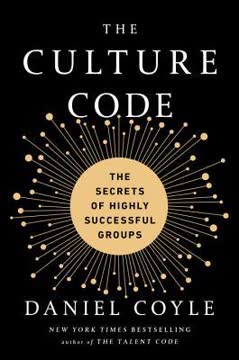
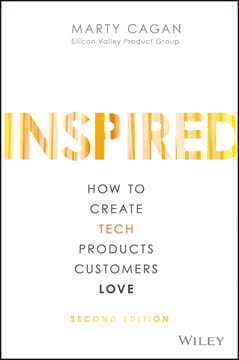
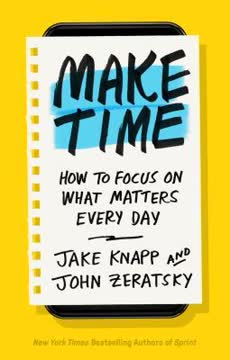

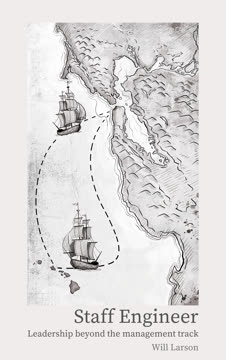
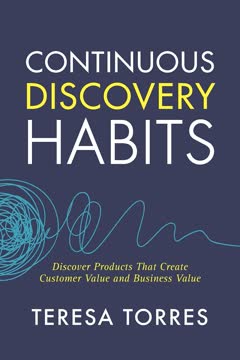

Download PDF
Download EPUB
.epub digital book format is ideal for reading ebooks on phones, tablets, and e-readers.




